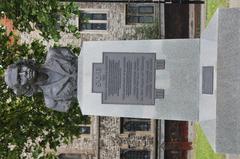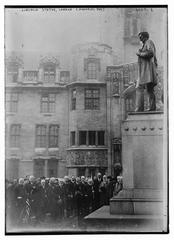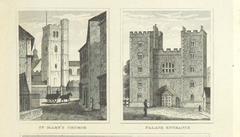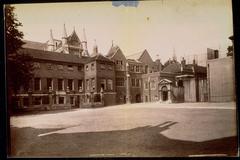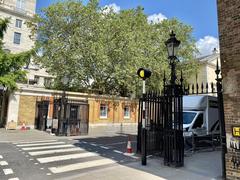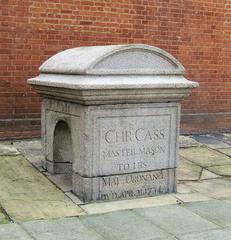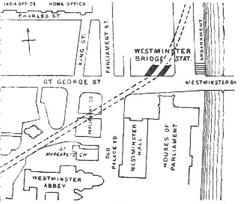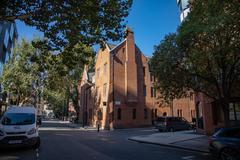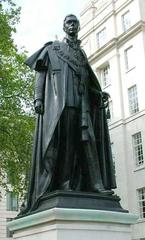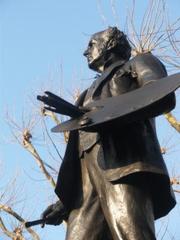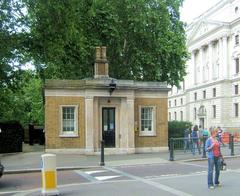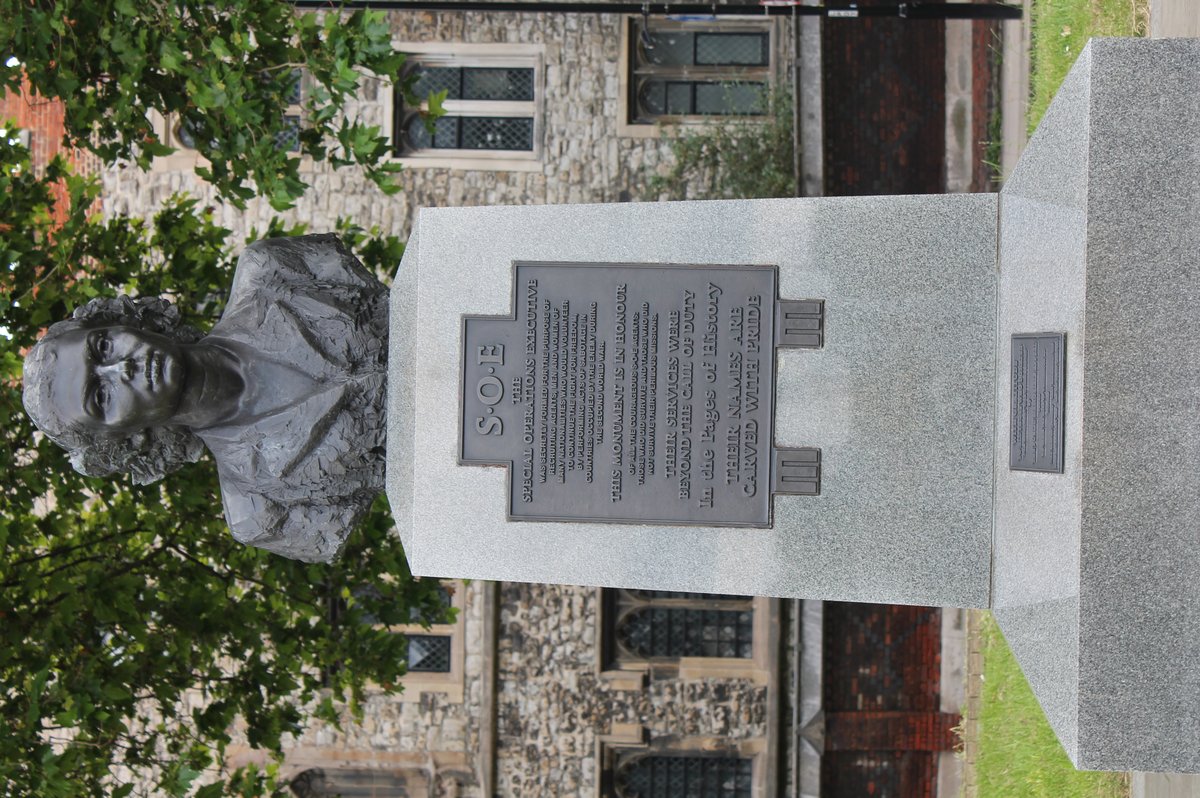
Special Operations Executive Memorial
Special Operations Executive Memorial Kingston Upon Thames: Visiting Hours, Tickets, and Historical Significance
Date: 14/06/2025
Introduction
The Special Operations Executive (SOE) Memorial in Kingston upon Thames stands as a powerful tribute to one of Britain’s most secretive and courageous World War II organizations. Established by order of Winston Churchill in 1940, the SOE was tasked with conducting espionage, sabotage, and supporting resistance movements across Nazi-occupied Europe. The memorial, unveiled in 2009 by the Duke of Wellington, honors approximately 13,000 SOE personnel—including over 3,200 women—who played a vital role in the Allied war effort. Kingston upon Thames itself holds historic significance, having been home to SOE training facilities and safe houses, making the memorial both a site of remembrance and a reflection of local wartime heritage. Visitors can experience its evocative design, featuring a bronze bust of agent Violette Szabo, and explore nearby museums and historic sites for a deeper understanding of the SOE’s legacy. For further insights, see Exploring London and Atlas Obscura.
Table of Contents
- Introduction
- History of the Special Operations Executive (SOE)
- Overview of SOE Memorials
- SOE Memorial in Kingston Upon Thames
- Visitor Information
- Visiting the SOE Memorial in London
- Frequently Asked Questions (FAQs)
- Conclusion
- Sources
The Special Operations Executive (SOE): History and Memorials
Origins and Mission
Formed in July 1940, the SOE was a clandestine organization created to “set Europe ablaze” by disrupting enemy operations and bolstering resistance in Nazi-occupied territories. Agents—men and women from Britain and Allied nations—were trained in espionage, sabotage, and communications, often operating behind enemy lines at great personal risk.
Memorials Honoring the SOE
Several memorials across the UK and France commemorate the SOE’s deeds and sacrifices:
- 64 Baker Street, London: The original SOE headquarters is marked by a commemorative plaque in Marylebone. The building is not open to the public, but the plaque is accessible at any time.
- Albert Embankment SOE Memorial, London: Unveiled in 2009, this public monument features a statue of Violette Szabo and is accessible year-round.
- Westminster Abbey, London: Houses a dedicated memorial to SOE agents within its historic walls, viewable during standard visiting hours.
- Tempsford Memorial, Bedfordshire: Located near RAF Tempsford, once a key hub for clandestine flights, this outdoor monument honors the agents and aircrews involved in SOE operations.
- Valençay SOE Memorial, France: Commemorates the French Section (F Section) agents who died during missions.
- Kingston upon Thames: Site of the SOE memorial and a town with significant wartime connections, including training and safe houses.
For more, see London Remembers SOE Memorial.
SOE Memorial in Kingston Upon Thames
History and Unveiling
The SOE Memorial in Kingston Upon Thames was officially unveiled on October 4, 2009, by the Duke of Wellington. It is the first public monument in the UK dedicated solely to SOE agents, reflecting Kingston’s historical role as a center for SOE training and operations during World War II. The memorial honors around 13,000 SOE personnel, including approximately 3,200 women, many of whom did not return from their missions (Exploring London).
Design and Symbolism
The memorial is notable for its understated yet powerful design. The focal point is a bronze bust of Violette Szabo, sculpted by Karen Newman, whose defiant expression represents the vigilance and bravery of all SOE agents (Atlas Obscura). The bust sits atop a simple stone plinth inscribed with a dedication to SOE personnel. The memorial specifically highlights Szabo’s posthumous awards—the George Cross and the Croix de Guerre—and references significant SOE operations, such as the sabotage of the heavy water plant in Telemark, Norway.
Located near the Thames and offering views towards London, the memorial invites quiet reflection while connecting visitors to the wider story of Britain’s intelligence and military history.
Notable SOE Figures
While the bust of Violette Szabo is central, the memorial honors all SOE agents, including:
- Violette Szabo: Executed at Ravensbrück after missions in France, her legacy is commemorated both here and at other sites.
- Noor Inayat Khan: A wireless operator executed at Dachau, remembered for her courage under capture.
- Odette Sansom (Odette Hallowes): Survived Gestapo imprisonment and torture, awarded the George Cross for resilience.
Visitor Information
Visiting Hours and Admission
- Open-air monument: Accessible year-round, 24 hours a day.
- Admission: Free, no tickets required.
Getting There
- By Train: Kingston railway station is a 10-minute walk away, with direct trains from London Waterloo.
- By Bus: Multiple bus routes serve the area.
- By Car: Limited parking is available; consult local regulations.
Accessibility
- The site features smooth, wheelchair-accessible pathways.
- Seating is available for rest and contemplation.
Nearby Attractions
- Kingston Museum: Local history and wartime exhibits.
- Coronation Stone: Historic Saxon coronation site.
- Riverside Walks: Scenic walks along the Thames.
Special Events and Tours
Commemorative events and occasional guided tours are organized by local historical societies around anniversaries and Remembrance Sunday. Check the Kingston council events page or Kingston Heritage for updates.
Visiting the SOE Memorial in London (Albert Embankment)
Location
- Address: Albert Embankment, Lambeth Palace Road, London SE1 7EH.
- Landmarks: Opposite Lambeth Palace, near the Thames, with views of the Houses of Parliament (Slow Travel UK).
- What3Words:
shall.transmitted.volume
Visiting Hours and Admission
- Hours: Open 24/7.
- Admission: Free, no tickets required.
Accessibility
- Transport: Waterloo and Lambeth North stations nearby; multiple bus routes serve Lambeth Palace Road. For travelers from Kingston, trains to Waterloo make for an easy connection.
- Walking/Cycling: The riverside path is flat and accessible.
- Facilities: No facilities at the memorial, but cafés, restaurants, and restrooms are available nearby.
Visitor Tips
- Best Time: Early mornings or late afternoons offer a tranquil experience.
- Photography: Permitted and encouraged.
- Respectful Behavior: As a memorial, visitors are encouraged to be considerate.
Nearby Attractions
- Lambeth Palace: Historic residence of the Archbishop of Canterbury.
- Houses of Parliament and Westminster Abbey: Iconic London landmarks.
- Imperial War Museum: Extensive WWII and SOE exhibits (Imperial War Museum).
- South Bank: Cultural institutions, restaurants, and riverside walks.
Frequently Asked Questions (FAQs)
Q: Are there guided tours at the SOE Memorials?
A: Regular tours are not scheduled, but special commemorative tours may occur during anniversaries and local events.
Q: Is the memorial suitable for children?
A: Yes, it’s appropriate for all ages and educational for families.
Q: Are the memorials accessible for wheelchair users?
A: Yes, both Kingston and London SOE memorials are accessible.
Q: Can I visit the memorial at any time of year?
A: Yes, both are outdoors and open year-round.
Q: Are photography and filming allowed?
A: Yes, for personal use.
Conclusion
The Special Operations Executive Memorial in Kingston upon Thames and its counterpart on London’s Albert Embankment stand as enduring symbols of sacrifice and resistance. Their thoughtful designs, accessible locations, and deep historical significance make them essential destinations for anyone interested in British intelligence history and World War II heritage. Explore related sites, consider attending commemorative events, and immerse yourself in the stories of the remarkable individuals who shaped the course of the war. For further enrichment, download the Audiala app for audio tours, and follow us on social media for updates on local heritage events.
Sources
- London Remembers SOE Memorial
- Exploring London
- Atlas Obscura
- Slow Travel UK
- Kingston Heritage
- Imperial War Museum
- Moovit
- Secret LDN
- Historic England
- Visit Thames
- National Army Museum
